Nutrition: separating fact and fiction – four times you shouldn’t believe the hype
by Aoife Carr, Healthy Trinity Healthy Eating Committee member

Most of us want to clean up our diets and get healthier for the New Year. But since when did trying to eat a little healthier get so confusing? As a nation, we seem to be pretty obsessed with nutrition and fitness at the moment. We’re constantly sold the idea of ‘paleo’, ‘vegan’ and ‘high protein’, by the media and food bloggers who argue out their (often extreme) views as the only way to be healthy. The health and fitness buzz that Ireland seems to currently be on isn’t helping us out in the stats department though – with the World Health Organization telling us that our obesity levels are heading for crisis point by 2030. Is trying to eat a little better becoming just too hard? The minefield of ever-changing information out there means that nutrition has become seriously difficult to navigate. It can be easy to give up on trying to eat well if you feel like your diet isn’t ‘paleo’ enough or that you can’t afford the latest ‘super food’ on a student budget. While there is no ‘perfect’ diet for everyone – the principles of an amazing diet should not be complicated at all - just based around eating a portion-controlled and balanced diet of fresh, natural and unprocessed food.
Let’s take a look at some of the most hyped-up nutrition myths out there and why we probably shouldn’t take them too seriously.
1. ‘Going Paleo’ is a no-brainer for health and fitness
The Paleo (or Paleolithic) diet has had a rapid rise to popularity over the past few years. Aimed at mimicking the eating habits of early humans, the diet is often touted by food bloggers and fitness lovers as a no-brainer for improved and health and fitness. You can read about the paleo diet in-depth here, but basically the diet recommends that you base your diet around vegetables, moderate fruits, grass-fed meats, fish, eggs, nuts and seeds. Off limits are grains, potatoes, legumes, dairy, refined sugar and all processed foods. There is nothing ‘wrong’ with the paleo diet – it includes fantastic foods for health and encourages only unprocessed, natural foods - which is what we should all be aiming for. However, problems with paleo can arise when we consider the foods that are restricted as per the diet’s rules. More studies are linking restrictive diets that focus on ‘clean’ eating with a rise in incidence of orthorexia nervosa (an eating disorder characterized by an obsession with eating only foods that are ‘healthy’ or ‘clean’). Realistically, there is no need to omit foods like whole grains (oats, rice, quinoa) and potatoes from your diet. Eaten in balance, these foods contribute important nutrients to your diet (think B vitamins and fiber) – they are definitely not ‘bad’ foods in any way. If you want to give the paleo diet a try though - do it! It can certainly help you to clean up your diet and wean yourself off processed foods. Pay extra attention to sources of calcium, magnesium, folate and iron in your diet, as deficiencies in all have been associated with the diet. The main message is to avoid becoming fanatical about it – see the bigger picture and realize that a restrictive mindset when it comes to food is never a good thing – no matter how healthy your diet is.
2. Healthy eaters count calories
Watching calorie intake is often the go-to strategy for people who want to eat healthier and get fitter. However, more people are becoming wise to the fact that a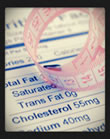 calorie-controlled and a healthy diet are not necessarily the same. In general, it is better to consider your food in terms of its nutritional content rather than its calorie content. So for example, a slice of white bread may have half the calories of a portion on nuts, but is far less nutrient-dense. On the other hand though, some people might think that nuts are a healthy food and consume them without even considering energy content – and then find that they gain weight easily, despite a healthy diet. The best way to manage your energy intake, without counting calories is to become familiar with standard portion sizes. This can be kind of difficult, as we all have a different concept of what a portion size is. The best resource I have found is this one by precision nutrition, which uses visual aids to help you navigate portion size. Choosing healthy foods regardless of their calorie content, but getting to know the right portion size for you is definitely one of the keys to balancing nutrient content with energy content and achieving your health and nutrition goals.
calorie-controlled and a healthy diet are not necessarily the same. In general, it is better to consider your food in terms of its nutritional content rather than its calorie content. So for example, a slice of white bread may have half the calories of a portion on nuts, but is far less nutrient-dense. On the other hand though, some people might think that nuts are a healthy food and consume them without even considering energy content – and then find that they gain weight easily, despite a healthy diet. The best way to manage your energy intake, without counting calories is to become familiar with standard portion sizes. This can be kind of difficult, as we all have a different concept of what a portion size is. The best resource I have found is this one by precision nutrition, which uses visual aids to help you navigate portion size. Choosing healthy foods regardless of their calorie content, but getting to know the right portion size for you is definitely one of the keys to balancing nutrient content with energy content and achieving your health and nutrition goals.
3. Going vegan is way better for you 
The vegan diet (eating only foods from plant-sources) is being hyped up more than ever. Everyone seems to be raving about going vegan at the moment and even Dublin Bus have joined in with a huge ‘#govegan’ campaign that’s going on. There is solid evidence to indicate the health benefits of a largely plant-based diet and some people choose to eat vegan due to moral reasons – all fine.
However, food bloggers and media sources can be pretty inaccurate with the information they give out on the vegan diet – and if you are thinking of following the diet for health and/ or weight loss reasons you should be careful. Humans require a balance of macronutrients and micronutrients for optimum health and this balance comes from a wide range of foods (i.e. a balanced diet). Omitting all animal products from your diet will naturally limit you in terms of nutrients that you’re taking in and make it more difficult for you to get the good stuff that you need. Lots of people try out the vegan diet and replace meat, dairy, cheese etc. with ‘fake’ substitutes that are heavily processed (think vegan cheese and meat substitutes, and packaged nut milks that are full of all kinds of preservatives). If this is you – ask yourself what you want to achieve by going vegan, as its definitely not ‘healthier’ if it relies on these non-natural substitutes. If you do decide to go vegan, you should also beware of food bloggers who advise eating nothing but fruit and vegetables (i.e. 10 bananas for breakfast) – 99% of the time, people who give you this advice have no formal nutritional expertise and nothing solid to base their advice on. If you’re thinking of making such a drastic change to your diet – it is worth seeking the advice of a dietitian or (qualified) nutritionist in person (find one near you here).
4. Super diets include ‘super foods’
The media loves a good ‘super food’ and can often make you feel that your diet is not healthy enough if its not full of maca, spirulina, goji berries and a range of others. All of the hype surrounding super foods also creates the perception that a healthy diet is unaffordable and unachievable. Foods that have been marketed as being ‘super’ include berries, dark green leafy vegetables and walnuts among others. Obviously these are nutritious foods that are a great addition to your diet. However, the problems with super foods are with the unfounded claims that they make (do a Google search on ‘goji berry’ and you’ll find all kinds of claims from ‘cures cancer’ to ‘clears up acne’). As consumers, it is so easy to soak up all of these claims made on foods – and believe that we need to eat them to achieve x, y or z. In fact, most of these claims are unscientific and are actually unpermitted as per E.U. food regulations. The European Food Safety Authority closely examines proposed health claims (a claim that a nutrient can contribute to a health effect, e.g. “iron contributes to normal cognitive function”) and permits only the ones that have robust scientific evidence to back them up. There are only a relatively small amount of claims that are permitted, which you can check out here. So most of the time, claims on ‘super foods’ are nothing more than food marketing. Realistically, the most nutritious foods you can get your hands on are pretty simple and affordable. Think all kinds of fresh veg, lean meat, fish, beans, nuts and eggs and anything that comes in its natural state.
This advice from American supermarket ‘Whole Foods’ explains the principles of a healthy diet really well – the website also gives tips for healthy eating on a budget among loads of others. You definitely don’t have to spend a fortune or resort to anything drastic to transform your diet to a healthy one in 2016 
Schools of Thought on Healthy Eating
by Martina Mullin, Health Promotion Officer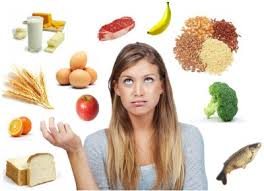
Confused about healthy eating? That’s not surprising. After years of being the great untouchable, fat is back and sugar is the new evil. On top of that, one week paleo is all the rage, the next, you’re an outcast if you’re seen with a burger on meat free Monday. So how do you eat healthy these days?
Below is a summary of some of the schools of thought on healthy eating we like. We think college is the perfect time to embrace and learn about food. Let’s face it, you have to eat 3-5 times a day for the rest of your life so you might as well learn how to enjoy eating healthy now, while you’re learning so much else.
Whole Foods 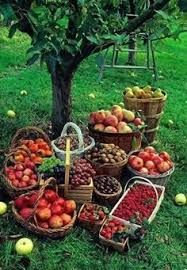
What?
Eat food in as close to the form as it comes off the tree/out of the ground/off the animal etc
Why?
- Processing foods can make them easier to digest. Whole foods will fill you longer.
- Processing foods strips nutrition. Yes, corn flakes are fortified but have you ever heard of a fortified carrot?
- Whole foods often come with everything we need to digest them so are easier for our systems to digest.
How?
- Cook fresh vegetables, fruit, meat and fish from scratch.
- Michael Pollen suggests only buying food from the outside aisles of supermarkets.
- We’re always wary of food that doesn’t go off! There are exceptions of course (mmmm cheeeese)
- Raw nuts are great for your brain, full of protein and fill you for hours. They’re great value in the Asian markets around Dublin.
We enjoyed reading Michael Pollen’s The Omnivore’s Dilemma on whole food.
Local Food 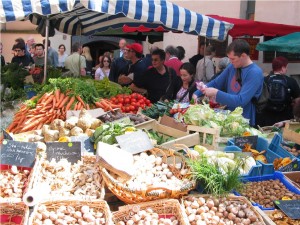
What?
Eat food grown or raised within X miles of where you live. The definition of X is up to you.
Why?
- The food travels less, which is better for the environment
- You support local food producers
- You learn about and eat according to seasons
How?
- Eat food from small shops or market stalls that source food through local farmers. Temple Bar market on Saturday mornings (pictured ) is lovely and there’s great value on Moore Street if you know what you’re doing (buy mid-price at least, the cheapest will be gone off by the time you get home)
- If you’re in a supermarket, buy Irish first and work out by country.
- Learn about Irish seasons, nearly everything is available in July/August but hungry May is called hungry May for a reason!
We enjoyed reading Barbara Kingsolver’s Animal, Vegetable, Miracle on local food.
Seasonal 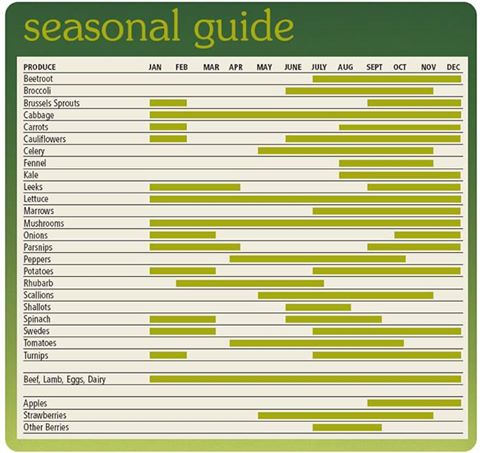
What?
Eat according to local food seasons.
Why?
- Food that’s in season is much cheaper and tastes better.
How?
- As food comes into season, the prices will drop, so follow the cheap food.
- Some supermarkets market fresh food that’s in season as deluxe or finest and put the price up. If you see a fresh food marketed as luxury, buy the own brand and check if it tastes as good.
- Look out for the really good value items at high season e.g. clementines at Christmas, berries in summer.
We like this chart

